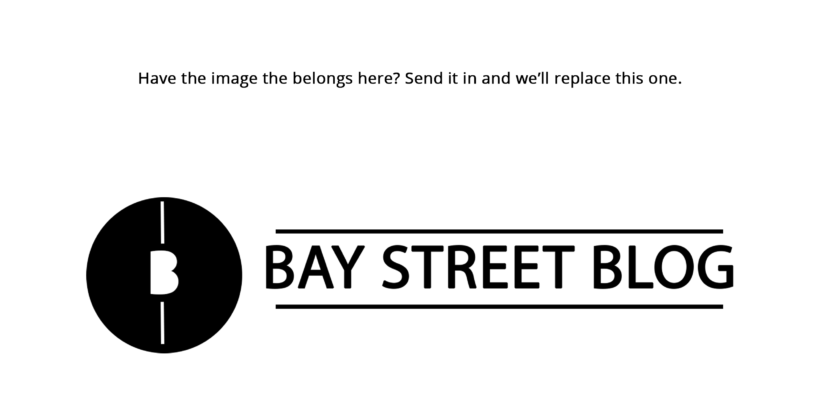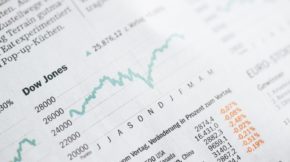Stock Market Correction: Time to Buy?
Share

Stock Market Correction
On Monday August 24th, the North American equities opened in the red – with the DJIA declining approximately 1000 points. Investopedia describes a stock market correction as a (usually negative) reverse movement of at least 10% in a stock, bond, commodity, or index to adjust for overvaluation. Year to date (YTD), the Dow is down over 10%.
A correction can be a result of various causes, including, but not limited to macroeconomic situations, and weak fundamentals/missed earnings expectations. Today’s stock market correction is a result of the investor worries over the world’s second largest economy, China.
The Shanghai Stock Exchange (SSE) is up a little over 1% YTD (January 05 – 2015 – August 24th), regardless of the sell off. From it’s high in June; SSE has lost 37% of its value. This is a result of investors selling off the SSE stocks due to different macroeconomic conditions, such as the Yuan devaluation. Some investors were forced to sell their shares as a result of a high margin, which also contributed to the stock market crash.
As more than $5 trillion has been wiped out from the global stock markets since China’s devaluation of the Yuan (Bloomberg), stocks enter a phase where it is a perfect time to start looking into investing for the long term.
Dow Jones Industrial Average (DJIA)
The DJIA is one of the most commonly watched indexes. This index represents 30 large publically traded companies that trade on the NASDAQ or NYSE.
List of companies in the DJIA index (as of August 24, 2015).

Only 20% of the stocks on the DJIA have a positive YTD return.
Source: CNN Money
DJIA Historical Drops
On September 17th, 2001, the DJIA drooped 684 points, equivalent to a 7.13% drop. This was the first trading day after 9/11, making it the longest trading pause since the great depression (Money Morning).
On September 29th, 2008, the DOW shredded 777.68 points, equivalent to a 6.98% drop. This happened during what is commonly known as the 2008 financial crisis. The U.S. House of Representatives rejecting the government’s $700 billion bank bailout plan fuelled the stock market correction. Subprime lending contributed to the 2008 financial crisis – as some US banks were approving mortgages to those who could not afford to cover their monthly payments.
The most recent drop happened on August 8th, 2011, on the news that the US might loose it’s AAA credit rating. Stocks declined approximately 15% two weeks prior to the August 8th opening (Money Morning). The DJIA lost 634.76 points, equivalent to a 5.55% loss.
Historical drops were mainly a cause of investors trying to escape to cash after a certain market trend, such as weakening credit ratings, and macroeconomic trends. A phase where investors are desperate for cash always provides a good opportunity to look into which stocks you should buy.
Standard & Poor’s 500 (S&P 500)
The S&P 500 is a market index that consists of 500 large American corporations that trade on the NYSE or NASDAQ. This can give a more accurate representation of the stock market performance, as the DJIA index only represents the 30 large publicly traded companies.
S&P 500 Historical Drops
Here’s a list of the S&P 500 Historical Drops, using the same days as the DJIA Historical Drops:
- September 17th, 2001: – 4.92%
- September 29th, 2008: -8.81%
- August 8th, 2011: -6.66%
Good time to buy low?
In a phase of a market correction – do not sell your stocks impulsively. It’s not a wise investment strategy – as the stocks have typically bottomed out. Selling your stocks low and buying your stocks high is a vicious cycle – and will deteriorate your portfolio if the pattern continues.
There are some exceptions where you may sell a stock. For example, if it’s a smaller cap stock with declining sales, then you might want to look into selling it. However, typically for large cap stocks, they should do just fine in the short-term after the market correction. Make sure too look at the big picture though, and keep up to date on the company fundamentals.
To Buy or Not to Buy – that is the question. The chart below shows what happens to the S&P 500 after it drops more than 5%.

Source: Bloomberg
As seen in the chart provided by Bloomberg, on average, markets had an upturn of 4.95% 12 weeks after a one-week decline of at least 5%. In other words, market corrections are typically a good time to take advantage of. Buy stocks while they’re low – as there is a 71.4% chance that there will be a positive return within the next 12 weeks.
August 24, 2015 Intraday Trading
Stocks opened in the red – with major indexes being down more than 4%. The DJIA opened at $15,493, 6.24% lower from it’s previous closing of $16,460. The DJIA closed at $15,871.35, approximately 2.4% higher than it’s opening price.
It was a similar situation for S&P 500, which opened at $1,879, 4.5% lower than it’s previous closing price of $1,965. S&P 500 closed at $1,893.21, which is 0.76% higher than it’s opening price.
Large caps such as NASDAQ: AAPL contributed to the intraday upward momentum. Apple Inc. opened at $94.87, being down 10%. It closed at $103.12 – approximately an 8% upward movement from the opening bell.
Conclusion
Stay calm during a stock market correction – don’t panic and sell everything. Think twice before each transaction. Stock market corrections are a perfect time to look into buying stocks, and investing for the long term.
Although North American equities are in a correction – this does not mean it has bottomed out. There’s still a 28.6% chance that the markets will continue to give negative returns for the next 12 weeks (Bloomberg).
Keep up to date on the current market trends. Look for signs of a market recovery, such as improving macroeconomic conditions, stronger fundamentals, and an increase in trading days closing with positive returns. As what Warren Buffet would say, “Be fearful when others are greedy and greedy when others are fearful.”
Writer: Jelani Smith
Disclaimer: All investing can potentially be risky. Investing or borrowing can lead into financial losses. All content on Bay Street Blog are solely for educational purposes. All other information are obtained from credible and authoritative references. Bay Street Blog is not responsible for any financial losses from the information provided. When investing or borrowing, always consult with an industry professional.






Bay Street Blog Newsletter
Click here to subscribe for a financial savvy experience.
Please check your email to confirm subscription!